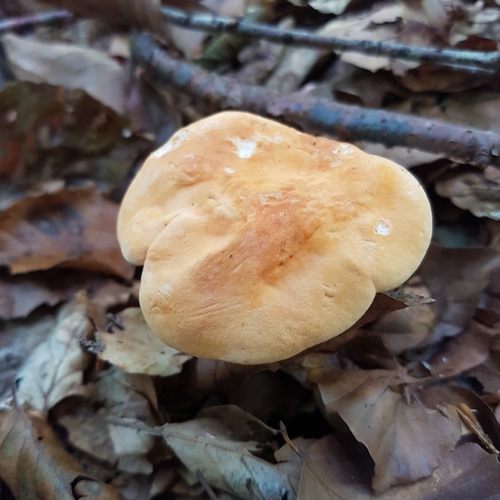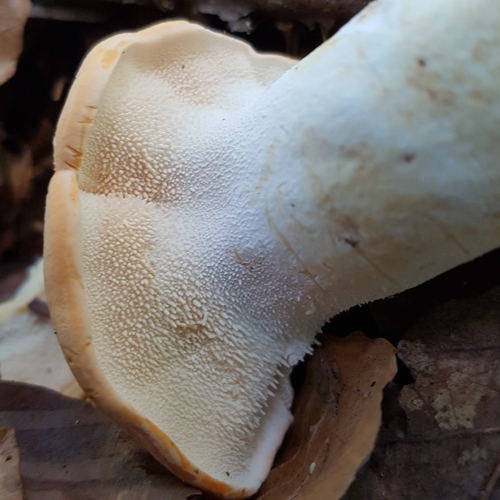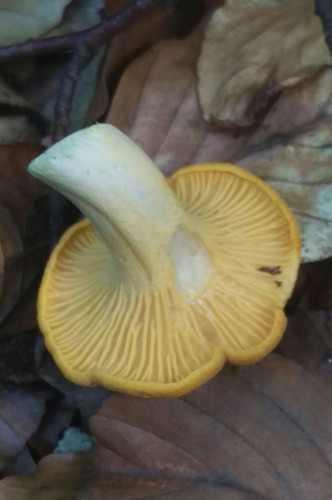Elementary Guide for Mushroom Photography
-> Deutsche Übersetzung / German translation
Many observations on iNat only show the top view of mushrooms and some observers than might wonder why they never get identifications. The reason is that the top view belongs to the rather uninteresting aspects of mushrooms, the bottom side of the cap is much more exciting.
Example:
 © lpsedillo
© lpsedillo
This picture could stand not only for different species but even for completely different mushroom families.
Only the bottom view of the cap reveals the truth:
 © lpsedillo
© lpsedillo
This is a hedgehog mushroom, with fine spikes on the bottom side of the cap.
 © kalomu
© kalomu
And this is a golden chanterelle, with thick gills on the bottom side of the cap.
Remember - viewed from top both mushrooms nearly look identically.
Here are some very elementary rules:
- Take several pictures so that at least the top and bottom of the cap and the stem are visible.
- At least one image should show the mushroom in its natural environment (not exclusively in the frying pan).
- Photograph several fruiting bodies if possible.
- For many types of mushrooms, a photo with a vertical cut through the fruiting body is helpful, or at least a photo of a crack if there is no knife available.
A few additional details such as smell, environment (deciduous / coniferous forest) etc. will increase the identification rate considerably.
@kalomu, @lpsedillo Thank you for sharing your photos.




